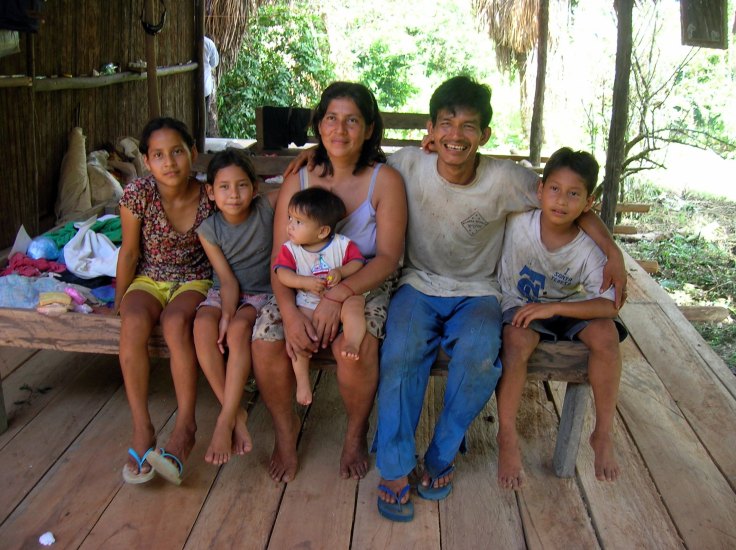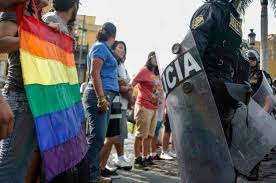Gender Roles
Gender roles in Peru differ between the urban and rural areas of the country. In the urban areas such as Lima, Trujillo, and Arequipa men are typically viewed as the head of the household with complete control over the family and their finances. Men are expected to go out and make the money in order to support the family with material goods and a place to live in while protecting them from harm. They are also given higher positions of power in the community and in politics over women as men are usually regarded as quick decision makers and natural born leaders. Being emotional is seen as a sign of weakness and is a huge blow to their manliness or machismo. Women on the other hand typically take care of domestic duties within the household to provide for her family. They cook, clean, and take care of the children while the husband makes the money. Women are typically paid less in wages than men are and through this it forces them to stay home and maintain the household. While maintaining the household women are expected to also be more emotional, modest, pure, and submissive. These traits are often referred to the idea of Marianismo and it is important that a woman maintains this image. In the rural areas of Peru such as the Andes and the countryside most of these roles are maintained but with more specific roles expected from women as poverty and food shortage is common. Women work alongside men, usually through farming and herding, to provide income and food for domestic use. Through this, women are regarded as almost equal to men as they do as much physical labor as men do in order to provide for the families and community.

Works cited
Hudson, Rex A. “Peru: A Country Study” Countrystudies. Countrystudies.us. 1992 Web. 25 October 2016
Saenz-Ochoa. “Gender Roles in Peru” Amsaenzoperu.weebly. Weebly. 17 February 2014. Web. 25 October 2016
Won-Kang, Jung. “Gender Roles and Rural-Urban Divide in the Peruvian Andes: An Analysis of the District of San Marcos” Ajlas. Latin American Studies Association of Korea. 11 May 2010. Web. 25 October 2016
Gender Stratification
Women in Peru represent a minority in both numbers and legal rights. Although historically somewhat equal to men, after the Spanish conquest the culture in what is now Peru became increasingly patriarchal. The patriarchal culture is still noticeable. Women receive less pay than men, have fewer employment and political opportunities, and are at times abused without repercussion. Contraceptive availability is not enough for the demand, and over a third of pregnancies end in abortion. Maternal death rates are also some of the highest in South America. Due to Peruvian society’s prejudice and discrimination, women historically have suffered disproportionately from the country’s pervasive poverty and unemployment. Although human rights issues affect many sectors of the population, there are some violations which are gender-based, or affect women to a greater extent due to prevailing patriarchal systems.
In addition, race and class may worsen women’s position in Peruvian society.Girls and women are well behind boys in educational terms. In rural areas, 33.7% of women are illiterate, against 10.9% of men. In urban areas this is far lower, with 7.4 % of women and 2.4% of men not being able to read and write. This clearly indicates the rural-urban divide. This has also an effect on rural women’s ability to speak Spanish, and hence on their ability to engage with institutional structures. Apart from poverty, which affects women disproportionally because of their caring roles and their lesser access to paid employment, violence is probably the most concerning problem. While there is not much current data, the comparative WHO study of 2005 cites that 61 and 49% percent of rural and urban women respectively have suffered domestic violence in their lifetime. Men in general have the highest authority within the house, although women also have much of the decision-making power, especially concerning children and family matters, even though it tends not to be explicitly recognized.
Works Cited
http://www.perusupportgroup.org.uk/article-560.html
amsaenzoperu.weebly.com
http://www.genderindex.org/country/peru
Peru LGBT
Homosexuality is legal in Peru, according to Equaldex, the new penal code adopted in 1991 did not mention if homosexuality was illegal. Same sex marriage is unrecognized in Peru. (Article 5 Chapter 2 of the Peruvian constitution defines marriage to be a “stable union” between a man and a woman.) When a marriage is unrecognized it is difficult to handle day to day situations. These situations being things such as obtaining a mortgage, tax issues, and so on. Peru gives legal recognition of sex reassignment by permitting a change of legal gender on an individual’s birth certificate. The right to change gender is legal, but requires surgery and sterilization. The lgbt is still behind on receiving respect and protection to this day.

Hate crimes continue to be committed with and police do little to fix anything. Police take part in abusing members of the lgbt, many were attacked by police with batons and water guns at this year’s public demonstration “Kisses Against Homophobia”. Violence against the LGBTIQ community happens every day, and the state of Peru needs to work on legal protection and rights for the lgbt community. Change needs to start in the legal system where a huge part of the discrimination continues to exist leaving the community to feel unprotected and unsafe. Peru hopes for change with their new president Pedro Pablo Kuczynski. President Pedro Pablo Kuczynski had tweeted: “Trabajemos por un país donde tengamos la libertad de ser felices. #LoveIsLove” ( Let us work for a country where we have the freedom to be happy. #LoveIsLove), after the shooting in Orlando, Florida.
Video Regarding Gay Rights in Lima, Peru 2011
sources
@equaldex. “LGBT Rights in Peru | Equaldex.” LGBT Rights in Peru | Equaldex. N.p., n.d. Web. 23 Oct. 2016. “Peru LGBTI Resources.” Rights in Exile Programme. N.p., n.d. Web. 25 Oct. 2016. AmerQuarterly. “Peru’s LGBT Community Frustrated By Violence, Presidential Election.” Americas Quarterly. N.p., n.d. Web. 26 Oct. 2016. Herrera, Sandra. “Peru’s New Political Climate Prompts Change for LGBT Rights.” OutRight Action International Formerly Known as the International Gay and Lesbian Human Rights Commission (IGLHRC). N.p., 7 July 2016. Web. 25 Oct. 2016. President Pedro Pablo Kuczynski’s Tweet | https://twitter.com/ppkamigo/status/749790852998987776?ref_src=twsrc%5Etf w



Leave a comment